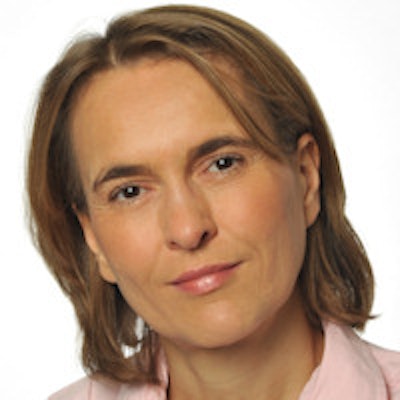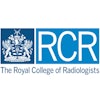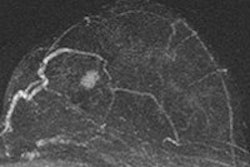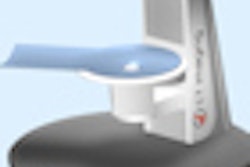
Dr. Christiane Kuhl was elected president of the Radiological Society of Rhineland-Westphalia (RWRG) at the annual general meeting of the society on 7 November 2013. Her candidacy was proposed by the departing president, Dr. Wolf-Dieter Reinbold from Minden. Kuhl has been head of the department of diagnostic and interventional radiology at Aachen University Hospital (UKA) since 2010. Just before the election, she spoke to the editors of RadiologieReportRuhr about her expectations and intentions in view of her new tasks.
RadiologieReportRuhr: If elected, you will become the first female president of the RWRG. What targets would you like to pursue as the president of the RWRG? What would be the motto of your presidency?
Kuhl: My view of clinical radiology, as we live it at the Aachen University Hospital, is, I find, absolutely future-oriented. Everybody knows that the share which radiology has in a patient's treatment is large and is indeed constantly growing. And yet it appears that radiology is even losing ground and visibility -- visibility to patients and referrers alike. So a few years ago the American College of Radiology and the RSNA ran a campaign called "Give radiology a face!" This was intended to counteract the trend.
 Dr. Christiane Kuhl, from the University of Aachen in Germany.
Dr. Christiane Kuhl, from the University of Aachen in Germany.
But the dissemination of teleradiology, of modern "high throughput" imaging methods, and in our country also the current hospital accounting system (DRG- diagnosis related groups) are causing radiologists to turn into pure internal service providers who need to batch-read loads of cases in order to survive, and therefore simply process what is on the request form. However, this can end up with outsourced radiologists sitting at the other side of the world reviewing images. This is certainly not what we want.
In Aachen, we take another approach. We are visible to the patients. We talk to them, explain the diagnoses and take a personal interest. This is not always convenient for us, but the patients value it very highly, as do the people who send us the patients for diagnosis or treatment. Because we assume personal responsibility for the patients and do our best to meet their needs, referring colleagues trust both in our diagnoses as well as in our clinical dedication. This greatly reduces discussions on whether or not a patient needs a specific imaging test, and troublesome referrers become the exception rather than the rule. So I make this appeal: Dear colleagues, you're not working for your referrers, you're working for the patients you share with them. And you have a great deal to contribute -- not just by making diagnoses, but also because your broad training makes you a good clinician. And this is why I am making a stand for a self-confident radiology which gets itself involved. Of course, in almost all larger radiological departments, at times, simply "getting it done" and coping with innumerable radiographs or CT images can be a major objective. But this shouldn't be all that our specialty is about. The point is that we radiologists must assume responsibility for our patients, or at least share in it. We will then be viewed as doctors by the patients and as true clinicians by our referring colleagues.
Are there any areas in radiology where this attitude is already established?
Yes, there are. In breast imaging for instance -- a specialty which tends to be regarded with some amused condescension within the field of radiology. But in fact, much of the way breast imaging is run could also be exemplary for the rest of radiology. This includes the standardized BI-RADS description and categorisation of findings, the ACR coding of the level of confidence with which a given investigation can be expected to depict disease -- but in particular, taking direct responsibility for the patient. In the field of breast imaging, it is the radiologist who discusses the results with the woman and her partner face-to-face.
Radiologists alone decide whether biopsies are necessary, carry them out themselves, and discuss the results with the patients and their relatives. Often enough, they even help choose suitable breast surgeons for the patients, thus becoming referrers themselves. This close contact with patients and colleagues is surely possible in other sectors of radiology -- at least, that's our experience in Aachen.
How do you see the role of radiologists and multidisciplinary collaboration at the UKA?
Multidisciplinary collaboration cannot be prescribed by regulation -- its success always depends on the people involved. Also, the essential precondition for multidisciplinary work is that there are individual disciplines in the first place -- i.e. excellent specialist expertise in specific sectors. For true multidisciplinary collaboration, the various disciplines must acknowledge one another without reservation. For us this means that the other specialties must acknowledge that the radiologist, as an expert in matters of diagnostic imaging and image-guided therapy, must make the decisions where these are concerned -- rather than simply executing the decisions of others.
Fortunately, the collegial environment at Aachen University Hospital is very open-minded about radiology acting as a clinical specialty. In fact, wherever possible, two radiologists take part in the main tumor boards; one to prepare the image demonstration and another to sit beside the therapists and participate on an equal footing in the discussion and decision-making about the patient's therapy.
At the Aachen University Hospital, radiologists can allot beds and have the responsibility to deal with the patients in their own right. We have created our own outpatient department that serves as a port of call for patients who are presented to us for treatment. As with all the other departments, we also like to see the patients ourselves clinically and collate all the information needed before we make the final therapeutic decision and give the patients their appointments.
Astonishingly enough, however, running an own outpatient clinics is evidently a very uncommon practice in radiology -- even though we are sometimes working with highly complex and very sophisticated individual therapeutic procedures. Also, this outpatient clinic is where we talk to the patients and their relatives to explain the different treatment options, their respective pro's and con's, the overall aim of the therapy and its prospects of success. We also see the patients on a regular basis for follow-up after treatment. Patients are followed according to a set protocol. Again, we are the people who can best decide whether or not, for instance, it is necessary to do add another session of transarterial treatment for a patient after transarterial chemoembolization (TACE) for hepatocellular carcinoma (HCC).
If we decide to treat, we would always submit the patients' cases to the tumor board. Because if we demand a multidisciplinary approach, we must also adhere to it ourselves, rather than simply going straight ahead and providing treatment on our own. All this takes effort, it is not always successful and it does not always run smoothly -- but all in all I believe that we in Aachen are on the right track. At least, we feel reassured by the high volume -- and still increasing number -- of patients who are sent to us for diagnosis or treatment.
Is it significant for you to be the first woman at the top of the RWRG and would you describe yourself as a token woman?
Well, now. I'd expected that question sooner (laughs). Nobody wants to be a token woman because it implicitly questions one's own qualification. But it is obvious that women are very much under-represented in the governing bodies of our radiological specialist society -- from the level of the working groups up to the executive committee. This is problematic, not just because of the so-called "gender issues." After all, these are the bodies which make their mark on clinical and academic practice in our field and advance it. And women still take very little part in this -- it's almost as if things were still in Conrad Röntgen's time.
Every day I see extremely good female colleagues in senior positions who lack confidence because they do not know whether they really ought to strive toward a leadership or department chair position. Because there are no role models. Because young women almost never see female department chairs or directors whose career-path or attitude helps them to decide whether such a position would be right for them personally. Young women -- or women in general -- have other ideas of what is important to them in life. It is therefore essential that there are more women to show them that running a department or a specialist society can be personally fulfilling for them and that this does by no means imply a "lonely life" far away from patient care, and consumed by annoying administrative duties. Quite the opposite, I would say. As a head of department I have the opportunity not just to care for patients but also for young doctors and scientists and technicians -- people with enthusiasm for the things which I myself hold dear. I have the chance to accompany them on a part of their life's journey. To see how they develop, how they grow with their tasks. And I am happy when they succeed in something -- not just professionally but in their private lives as well. This fills me with great satisfaction.
And whether this is popular or not, these are the reasons why I am convinced that nothing will change around here if we do not bring in a temporary quota to increase the share of women in leadership positions. And first and foremost in our own specialist society.
What motivated you to put yourself forward for this position?
The Radiological Society of Rhineland-Westphalia fills the position on a rotation basis. This means that a president from the Rhineland should alternate with one from Westphalia, and a president from an academic institution with one from an institution which is not a university. I was invited to apply because the current period called for a Rhinelander with a university background. So, at this point I should like to thank Dr. Reinbold for the trust he showed in making this request. I am looking forward to spending the next two years in further advancing our specialty through shared discussion with colleagues.
Career profile
Dr. Christiane Kuhl has run the department of diagnostic and interventional radiology at Aachen University Hospital since 2010. Born in Bonn in 1966, she is a radiologist who is known chiefly for her research in the field of MRI of cancer, focusing especially on breast cancer. She has received many national and international awards for her work. It is less well known that, until her appointment in Aachen, she was Germany's first and only specialist professor of oncological diagnostic investigation and interventional tumor therapy from 2004 to 2010.
Editor's note: This article is an edited version of a translation of an interview carried out in German and published online by the German Radiology Society (DRG,Deutsche Röntgengesellschaft). Translation by Syntacta Translation & Interpreting.



















